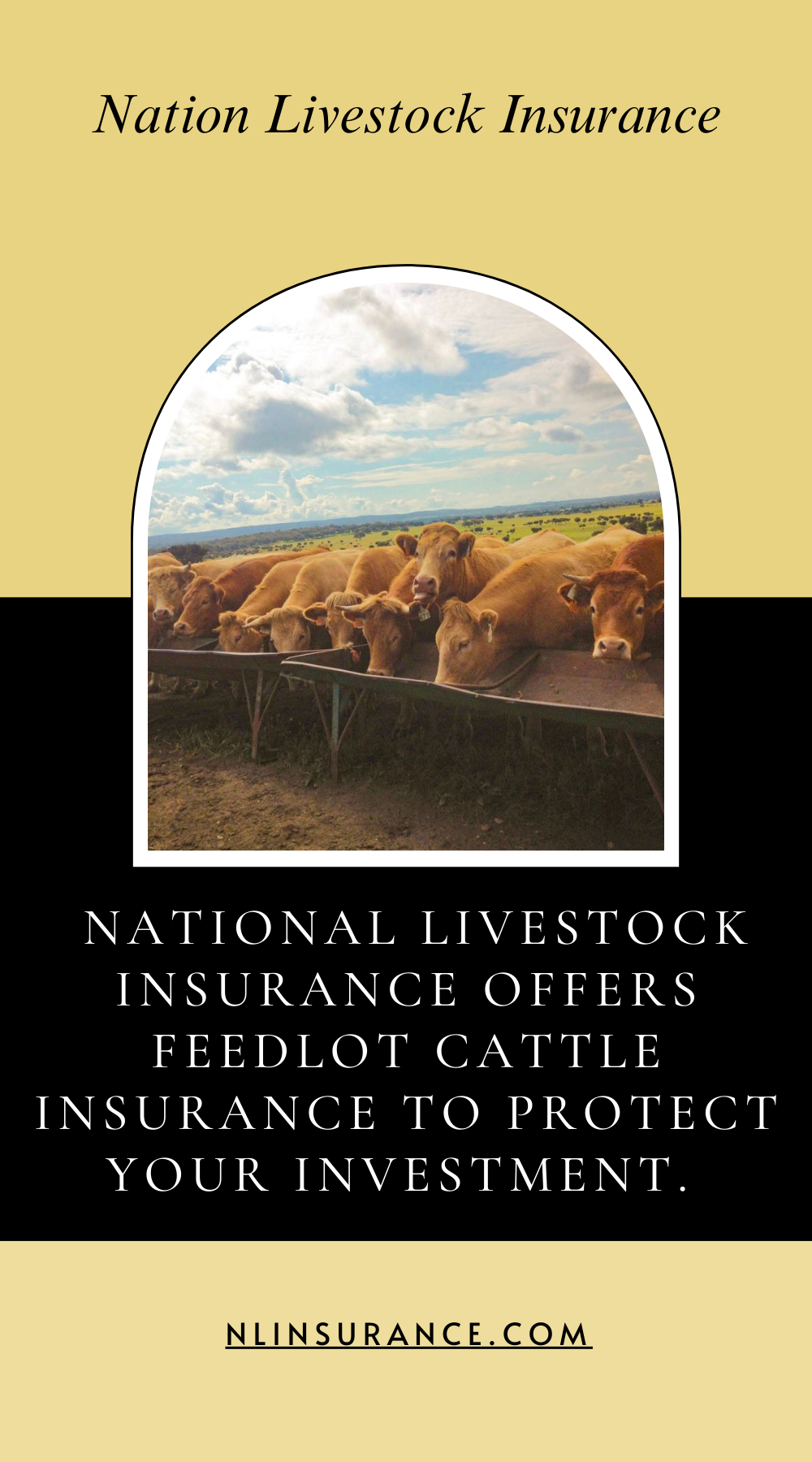In Dimmitt, Texas, home of Dean Cluck Feedyard, Oppliger, Rafter 3, Nutt, Bud Hill, and more, where the feedlot industry is the backbone of daily life. These yards run thousands of cattle at a time, all at stake when a sudden storm brews or a silo wall collapses. That’s where Feedlot Cattle Insurance from National Livestock Insurance plays a vital role. It protects your herd’s value, with clear, valuation-based payments when cattle die from named risks, plus riders for hypothermia, carcass removal, and contaminated feed or water. No vet bills are covered, only mortality events tied to specific named perils.
Instead of low-ball payouts, the valuation schedule sets insured values per head that follow market prices. Whether it’s a Black Angus steer or a white-faced heifer, you’re compensated fairly based on real-time cattle values, not what you paid, and not what you might recover at auction.
Dimmitt sits in a semi-arid zone with wide seasonal temperature swings. Summer highs soaring into the 90 °F can sap cattle if they lack shade or water. Spring and early summer weather tends to be severe: hailstorms, lightning strikes, and straight-line wind gusts rock pens. Lightning can ignite hay stacks or fences, and windstorms can collapse feed bays, risking cattle perishing under debris.
Flash floods make it worse. A heavy rainstorm upstream may send a sudden surge into low-lying pens. Quick-moving water can drown cattle before staff can react. That’s why drowning and flood perils are marked as covered conditions.
Winters aren’t safe either. Winters deliver bite, blizzard smothering is historically lethal to penned cattle. In fact, Texas Panhandle snow storms have wiped out entire herds in past decades. In some years, tens of thousands of head have perished . This policy covers those smothering events, bringing some relief in dire times.
If a lightning bolt hits a feed bay or barn during a storm and cattle inside perish in the blaze, that death is covered. If rushing flood waters swamp pens and drown cattle overnight, death by drowning is covered. If a blizzard buries pens and animals suffocate, the smothering peril steps in. Pens collapse from wind or structure decay and crush cattle, covered under building collapse. Animals stolen or lost due to vandalism? Theft and vandalism are included. If someone cuts the fence and cattle wander off, that loss is covered too.
Hypothermia – Sudden cold snaps in fall or spring can kill cattle outright, especially calves. If death is due to cold exposure, this rider gets it covered.

.png)
Overflow or chemical drift can pollute tanks or feed. Cattle that die after ingesting toxins are covered under this rider.
Carcass Removal – After loss events, removing dead cattle becomes an urgent priority. Whether disposal is via rendering, burial, or incineration, this rider helps cover clean-up costs.
While insurance covers the worst, feedlot managers still need preventive measures that include check pen drainage, secure hay/feed storage, test water tanks after storms, inspect barn roofs before spring, reinforce fencing, and maintain trailers. Overlooking these can lead to denied claims if an incident is tied to negligence.
On transport days, whether to market, sorting pens, or farther, ventilate trailers, secure partitions, and avoid travel during weather extremes. Cattle left without water or protection risk hypothermia or heat stress. If death occurs despite proper care, the claim goes through.
When loss hits, quick action matters. You report, gather vet or field statements, take photos, note weather or incident reports, and shoot us a call. Our adjusters, experienced with Dimmitt’s feedlots, verify loss. If the peril is covered, settlement occurs quickly, based on valuation schedule and any elected riders. Carcass removal costs are added if applicable. Hartford's A+ rating means prompt, reliable payouts.
Whether operating a family feedlot with 500 head or one processing 50,000, these policies adapt. You choose valuation thresholds, desired riders, and disaster fears. We tailor it for your operation size and seasonality. When your herd grows or market values shift, your schedule adjusts.
National Livestock Insurance has deep roots in the High Plains since 1972. We’ve insured feedlots like Dean Cluck and others dotting the Dimmitt area. Our Amarillo-based agents know every windstorm, flood risk, and feedlot mile. When you call, you’re speaking with someone who understands your pens, your cattle, and your deadlines.
We also check in seasonally, with storm reminders in April, flood prep guidance in July, heat alerts in August, and snow risk in January. If a drought or water event threatens feed or tanks, we remind you to flush or test. We’re part of your team.
Remember the South Fork Dairy explosion near Dimmitt last April, where equipment failure sparked a blaze that killed tens of thousands of head? Imagine insurance for those losses, it brings what’s needed to rebuild, even when the worst happens. While not a feedlot case, it shows how critical mortality coverage is in crisis.
Or restorations after tornado-like events in years past, roofs lifted off barns in neighboring counties, insurance kept operations going amid damage.
Running a feedlot in Dimmitt is a high-stakes operation. You juggle pen health, cattle feed, transport logistics, and weather threats. One flood, fire, barn collapse, or blizzard can cost tens of thousands of dollars and weeks of lost productivity.
Feedlot Cattle Insurance from National Livestock Insurance fills that gap. It ensures cattle value is protected, no vet bills, no production losses, just fair compensation based on the valuation schedule when death strikes. The optional riders catch the cold snap deaths, toxic feed or water cases, and carcass removal needs that often go uncovered.
Add local agents, seasonal support, and The Hartford’s financial backing, and you’ve got more than insurance, you’ve got resilience.
Call or email us today. Let’s walk your yard, evaluate your risks, and build a policy that matches your feedlot’s scale, challenges, and temperament. Your cattle and your business deserves protection.